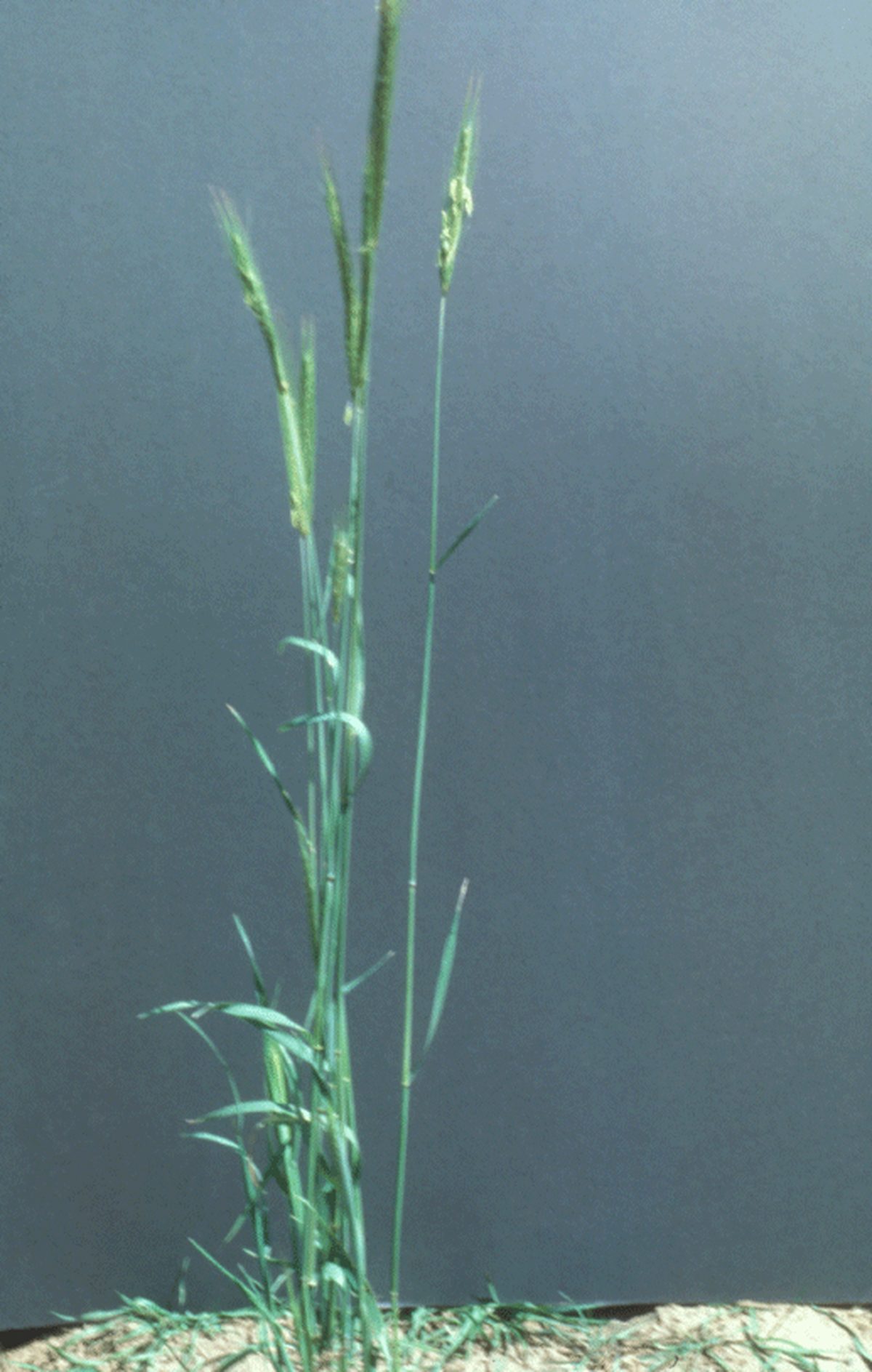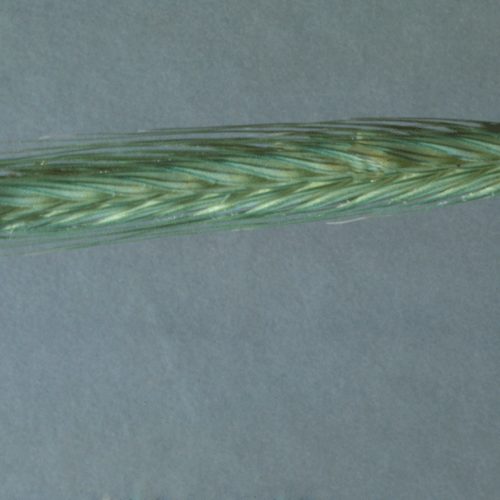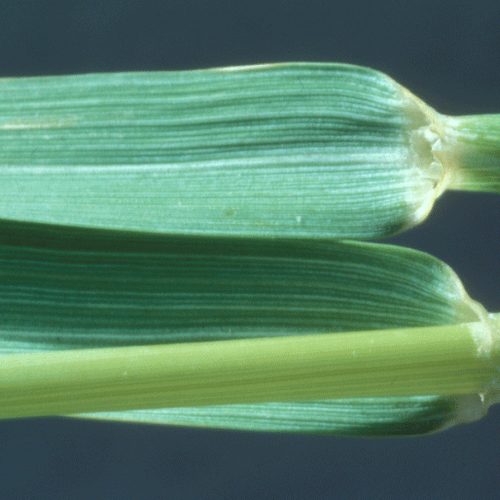Cereal Rye
Secale cereale

Family: Poaceae
Other Common Names: common rye
Weed class: C
Year Listed: 1988
Native to: Asia and Eastern Europe
Is this Weed Toxic?:
not known to be
Why Is It a Noxious Weed?
Cereal rye is a domestic rye grown widely throughout North America. However, field contamination from volunteer rye often creates a serious problem with wheat producers. Cereal rye is also known to escape cultivation and become established in other areas.
How would I identify it?
General Description
Cereal rye is an annual, or occasionally a biennial and reaches 18 to 40 inches tall.
Flower Description
The inflorescence is a terminal spike, somewhat flattened, often with short awns and 3.1 to 5.9 inches long.
Leaf description
Leaf blades are flat, 1/16 to 3/8 inch wide with open sheaths that may be hairy or smooth.
Stem description
Stems, called culms, are upright and hollow, 1 foot to 5.9 feet tall and are rough or hairy below flower spike.
Fruit Seed Description
no info provided
Where does it grow?
Cereal rye can escape cultivation to become established on roadsides, waste places, cropland and even open rangeland. Please click here to see a county level distribution map of cereal rye in Washington.
How Does it Reproduce?
Cereal rye reproduces by seeds.
How Do I Control It?
Please refer to the PNW Weed Management Handbook, or contact your county noxious weed coordinator.
For More Information
See our Written Findings for more information about cereal rye (Secale cereale).
Lincoln County NWCB Brochure on cereal rye





